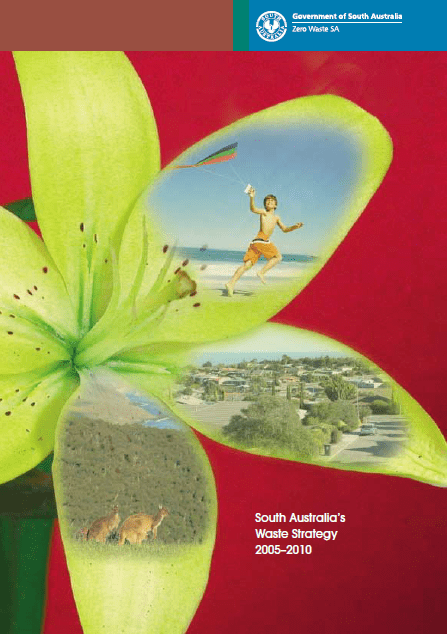
- Archive (pre-2016)
South Australia's Waste Strategy 2005-10
Executive Summary: The way South Australians deal with waste generated through consumption, manufacturing and processing patterns will have a direct bearing on our capacity, and that of future South Australians, to live sustainably. South Australia’s waste disposal practices have fundamentally relied on landfill as the lead disposal technology. Several major landfills service metropolitan Adelaide and a large number of smaller rural and regional landfills collectively receive about 1.28 million tonnes of solid waste every year. By disposing waste to landfill we bury many useful resources, preventing ongoing use of the material(s) in one form or another. However, recent studies show cause for optimism. South Australia is one of the best performing jurisdictions around the world for diverting recyclables from landfill. Zero Waste SA, a State Government agency created in July 2003, is championing a new approach to waste management and has developed South Australia’s Waste Strategy 2005–2010 to guide and inform the necessary changes. The Waste Strategy builds upon a number of previous initiatives to tackle waste at both the State and national level. The waste management hierarchy is a nationally and internationally accepted philosophy for prioritising and guiding efforts to manage waste. It is a guiding principle of the Zero Waste SA Act 2004 and the foundation upon which South Australia’s Waste Strategy has been developed. The waste management hierarchy establishes approaches to waste management according to their importance and preference in descending order. Waste avoidance and reduction are regarded as the most optimal approach and, to the extent that this cannot be achieved, reuse, recycling and recovery of waste is preferred, with treatment and disposal the least preferred approach. This is the first Waste Strategy for South Australia. A new waste strategy will be produced at least every five years, each progressively building upon previous gains. The direction for this first strategy is focused around five key objectives. 1 Fostering sustainable behaviour: 2 Reduce waste: Achieving significant 3 Implement effective systems 4. Implement effective policy instruments: 5 Cooperate successfully
Download




